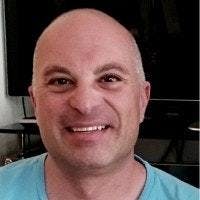How to succeed as a microgrid startup: Xendee’s story
Xendee, which develops microgrid decision support software, reached its four-year anniversary this month and with it came the brass ring so many microgrid startups seek — its Series A financing.
When we talked last week, Xendee had just received $12 million in Series A financing, led by Anzu Partners with additional backing from TravelCenters of America, the nation’s largest publicly traded full-service travel center network; Evergy Ventures, the nonregulated investment arm of Evergy; and Surlamer Investments. The financing will be used to increase Xendee’s Net-Zero DER and ultrafast Electric Vehicle (EV) charging platform deployments.
Here’s our edited conversation.
Forget Hollywood
MGK: There are a lot of young companies in the microgrid space. Now that you’re four years in, you’ve got your Series A financing and your reputation is building, is there advice you’d give other energy entrepreneurs coming up?
Naslé: Well, at the end of the day a company is its people. You really want to make sure the core team is world class. Just like a microgrid gives you a lot of options and flexibility, you have a lot of options and flexibility when you have a strong team.
It’s also important to stay focused on the objective. I’ve noticed the symptom when people are trying to find their way is that they use a shotgun approach. That’s very inefficient, especially when you’re capital constrained — even when you have capital, it’s still a pretty dumb thing to do. People aren’t sure what’s going to work, so they try to throw everything at the wall.
Always seeking outside knowledge and information and getting sensory input that’s outside of your own little bubble and cocoon always helps. That’s where advisers come into play. Other industry partners can give you a different ear onto the ground, so you can hear what’s happening. Then you can tune your approach accordingly.
So I would say: Team, focus and a good set of advisers, which is really an extension of the team itself. And then everything else, you know, hopefully will work out.
“I always ask people, are you sure you want to do this because it’s not what you read about.” — Naslé
But it’s still risky. I always ask people, are you sure you want to do this because it’s not what you read about. There’s the reality, and then there’s the Hollywood version. And most people get the Hollywood version, but the reality is you have to have a certain level of not just tenaciousness, but laser focus, regardless of the pressures that are out there. And that’s the best way to improve the chances for success, at least based on my experience.
MGK: It’s a lot of nail biting …
Naslé: Yeah, but some people enjoy that and some people don’t and not everybody’s comfortable with ambiguity so if there is comfort with ambiguity, then great. You know, it would be an exciting thing, but if people don’t like ambiguity, then it’s probably the wrong thing that they’re doing.
Investors bet on the jockey
MGK: Jumping back to what you said about the importance of having a really good team. What do you look for in a team? Are you looking for employees now? I know a lot of companies are.
Naslé: We’re hiring in the marketing and sales area. We’re pretty well configured on the software development side and on the algorithms science and engineering side.
As to what I look for in the core team, Scott Mitchell — our co-founder — he’s probably one of the most accomplished programmers I know. So he’s able to attract — because of his reputation within the software development world — really good people. You know, A players like to play with the A players. And Michael Stadler — our other co-founder — he received the presidential science award for his work in distributed energy resource optimization. So, people want to come work for him, too. It makes hiring a lot easier.
It’s not easy to find these people. It’s not easy to convince them to give up what they’re doing and come and do something different. But that’s kind of the job of the CEO. At the end of the day, it comes down to making sure that you have the right team and you give them the resources and the opportunities and flexibility to do what they need to do. And then once you have that, the hiring kind of takes care of itself and they can build their teams fairly easily.
“Sophisticated investors don’t bet on the horse, they bet on the jockeys.” — Naslé
Once you have a good team, then you’re able to attract really good partners like Anzu and TravelCenters and Evergy because sophisticated investors don’t bet on the horse, they bet on the jockeys.
At the same time, I think everybody, you know, in the core team needs to share common values and common goals, too. So regardless of their technical acumen and their personal accomplishments, they have to share a common set of values so that they work together in a trusted collaborative.
Trust as a core value
MGK: How would you describe that common set of values? What do you like to see?
Naslé: Well, at the very core you have to be trustworthy. There has to be trust. There has to be mutual respect and there has to be a merit-based approach so that everybody feels heard, feels valued and feels appreciated at the end of the day.
Sometimes when people are very accomplished, they like to be in the spotlight by themselves, or they want to take credit for everything. So they want to tell people what to do instead of give them what they need. So you run into those dynamics, too, that are really ego driven. If the egos are off, then it becomes a conflict. If the values are off, it becomes a conflict regardless of the technical accomplishments.
The case for the travel center microgrid
MGK: Going back to your Series A financing announcement, it’s an interesting group of investors. Can you talk about why we’re seeing companies like TravelCenters install microgrids?
Naslé: We see a lot of need for on-site energy to support fast charging and EV charging infrastructure. It needs to be there. Utilities obviously have a need to address that and want to address that, as do those who have infrastructure that’s currently meeting the need for fossil fuel. So given the work that we had done on complex, distributed energy side microgrids — the research that we did through funding with the Department of Energy and their microgrid program with Idaho National Labs to really see how we can enable fast charging where there is a grid, but the grid might be weak or where there is no grid all — these systems need to go in there.
So that’s why you’re seeing the interest from companies like TravelCenters of America wanting to partner and have an ownership stake at the table with us. Same with Evergy — I mean they’re the utility for all of Kansas and Missouri, and they deployed the largest EV charging infrastructure years ago.
“My feeling has always been that microgrids are the technology that can enable mass EV infrastructure.” — Naslé
My feeling has always been that microgrids are the technology that can enable mass EV infrastructure for a few reasons. First, when we’re talking 350 kilowatt chargers … one, OK, but three, four, five of them, we have an intensity here that the grid wasn’t built for normally.
The other reason is bringing some sort of pricing stability into the business plan for EV charging. My feeling has always been that EV charging alone, by itself, isn’t a very profitable business. The [profit] margins might be similar to a gas station — just pennies in profitability on a consumption meter. But when you’re able to deliver other capabilities such as combined heat and power, you bring in the power quality component, the resiliency, the ability to interact with a grid and offer ancillary services, then you can stack these value streams.
A microgrid is a very, very accomplished piece of technology. [Microgrids] can stack a lot of these value streams. Then the business case becomes quite nice.
MGK: So that might mean, in practical terms, if the EV chargers aren’t being used, the microgrid could be interacting with the grid and providing certain services and bringing in revenue?
Naslé: It can be. Also hydrogen’s going to be a big piece, I believe, especially when you talk about moving heavy equipment. So you can always use the energy to also produce and store hydrogen, too. So there are ways you can offset energy to do work other than just charging something.
MGK: We’re starting to hear more and more about that. That’s very interesting.
Naslé: You get that flexibility with a microgrid – it really gives you a lot of options. For a travel center, there are restaurants, showers, sleeping areas, all sorts of services. Almost like a hotel that happens to also provide refueling and a service department so they can fix things, too. You have almost a small city. These sites are 25 acres on average.
So not only do you have real estate to deploy a lot of DERs, but you also have a lot of services that you’re offering. If the power goes out, people can still continue charging — or putting hydrogen — in the cars or trucks. At the same time, you still have the ability to provide basic services, like hot water, air conditioning and Wi-Fi and everything else. Your repair center can still continue running their power tools to repair things. Lights are still on. And, then, on top of that, you now have a business case. You know what your cost is going to be for the energy that you’re storing or selling. And, then, finally you have the ability to support the bigger grid when it needs help.
I think the beauty of microgrid technology is really this flexibility that it brings to the table — to adapt to the use case at the time that the system needs a particular reaction or action to be made.
Track news about microgrid startups. Subscribe to the free Microgrid Knowledge Newsletter.
About the Author
Elisa Wood
Editor-in-Chief
Elisa Wood is the editor and founder of EnergyChangemakers.com. She is co-founder and former editor of Microgrid Knowledge.

